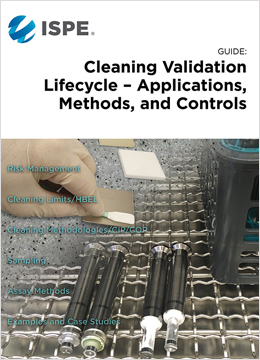Cleaning Validation Principles (T17)
Overview
As cleaning technology and detection methodology advance, so do the challenges associated with establishing, managing, and maintaining a scientifically sound cleaning validation program. With the FDA's risk-based regulatory initiatives focusing new attention on the risks of cross-contamination understanding lifecycle management techniques for an effective cleaning validation program is paramount. This training course covers the risk-based approach to cleaning development and verification; risk analysis; procedures and evaluation tools including FMEA / FMECA, master planning, risk control, PAT, periodic assessment and monitoring, risk review and communication.
What You Will Learn
- Elements of a cleaning validation program from start to finish
- Exploring such concepts as the determination of residues to be targeted
- Selection of analytical and sampling methods
- Determination of appropriate limits in various pharmaceutical and biotechnology processes
- Establishment of scientific rationales acceptable to regulatory inspectors
- For mature cleaning validation programs, concepts such as understanding process control, capability
- Learning to effectively self-audit a cleaning validation program and documentation
Resources and Activities
- Pre-Course Work Materials
- Interactive Exercises
- Learning Assessments
- Guide: Cleaning Validation Lifecycle - Applications, Methods, & Controls
Course Modules
- Regulatory Requirements for Cleaning Validation
- Goals of Cleaning: Risk and Science
- Risk Assessment: Risk Identification
- Risk Assessment: Risk Analysis
- Risk Assessment: Risk Evaluation
- Risk Control: Risk Reduction
- Method Validation and Recovery Studies
- Documentation for Cleaning Validation
- Risk Review and Risk Communication
Who Should Attend
- Professionals responsible for all aspects of cleaning validation programs, including development, deployment, and maintenance
- Quality assurance specialists, quality control technicians, regulatory affairs professionals, pharmacologists and toxicologists, validation scientists, and validation service personnel
- Manufacturing supervisors, technical support personnel, and engineers responsible for evaluating cleaning systems, reviewing equipment, and supporting the cleaning validation program on the plant floor
- All levels of management who need to understand the science of cleaning and cleaning validation including the aspects of residue selection, sampling method and analytical detection method validation, limits determination, and strategies for managing multi-product facilities
Additional Course Content
- Risk-Based Approach to Cleaning Development and Verification
- Risk and Hazard Identification
- Science-Based and Risk-Based Limits
- Risk Analysis
- Cleaning Process Risk Analysis and Process Development
- Cleaning Equipment Design and Qualification
- Cleaning Control Strategy
- Sampling
- Analytical Methods for Assessment of Cleaning
- Risk Analysis of Cleaning Procedures
- Risk Evaluation
- Tools for Risk Analysis in Cleaning
- FMEA / FMECA
- Risk-based Analysis of Cleaning Data
- Risk Analysis Master Planning
- Assessment and Monitoring
- Risk Control
- PAT approaches to Cleaning Validation
- Periodic Assessment and Monitoring
- Risk review
- Risk Communication
Learning Objectives:
- Identify and characterize potential residues including product, processing aids, cleaning agents, and adventitious agents
- Apply appropriate analytical methodology for selected residues
- Determine suitable sampling techniques and the selection of sampling locations that present a challenge for the cleaning process
- Calculate residue limits that meet all necessary regulatory requirements
- Create scientifically sound rationales, validation protocols, and reports
- Manage the challenges of multi-product facilities in the establishment of limits, determination of validation strategies, and maintaining the validated state
- Understand campaign-based production strategies for effective and scientifically sound validation
- Differentiate the requirements for cleaning validation when using manual, semi-automatic, and automatic cleaning technologies
- Determine scientific grouping or bracketing approaches
- Comprehend the pitfalls inherent in cleaning after the production of biopharmaceutical and pharmaceutical products
- Accomplish analytical method validation and recovery study requirements in cost-effective studies that provide the necessary assurance of an analytical system
- Evaluate cleaning practices, limit calculations, scientific rationales, and validation documents through internal self-audits to ensure compliance with ever-changing regulatory needs
- Practice hands-on exercises designed to reinforce core competencies and job-focused skills
